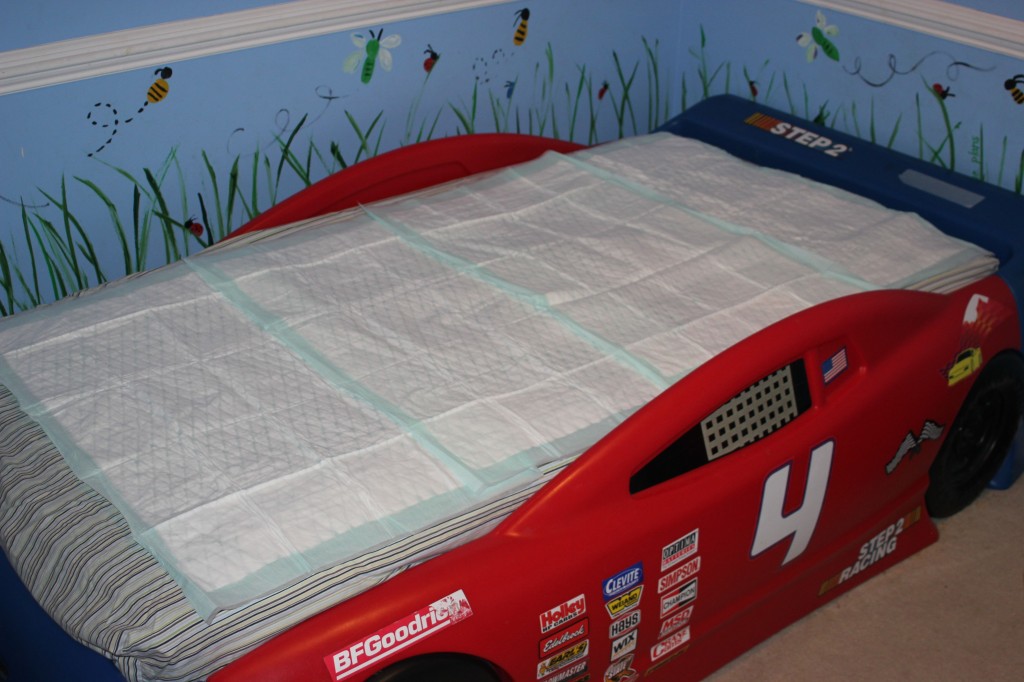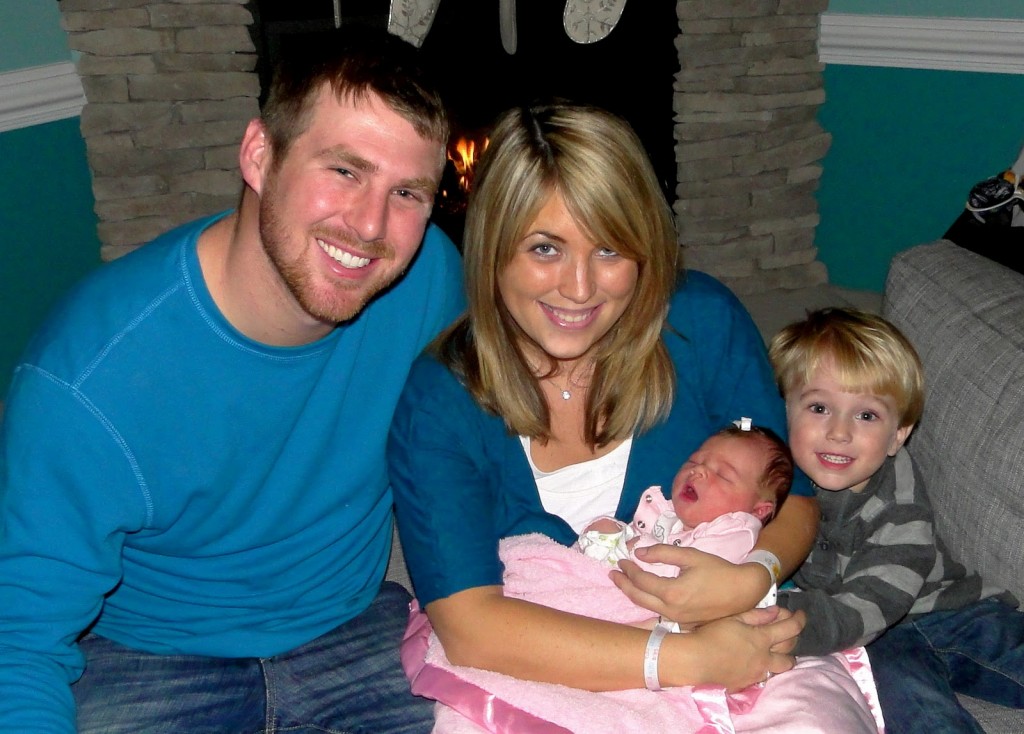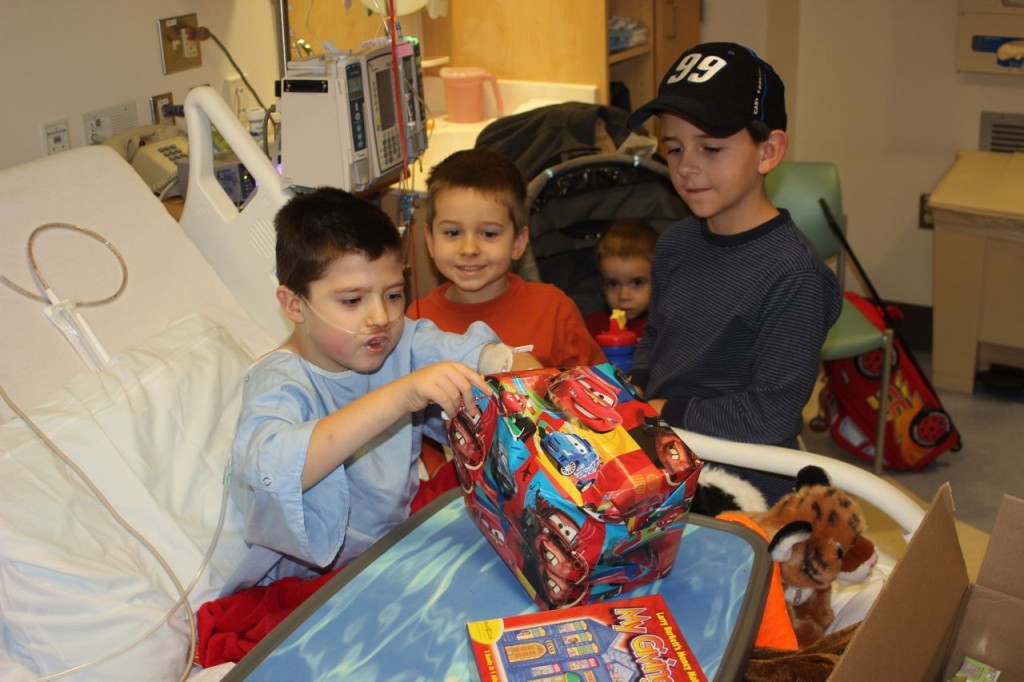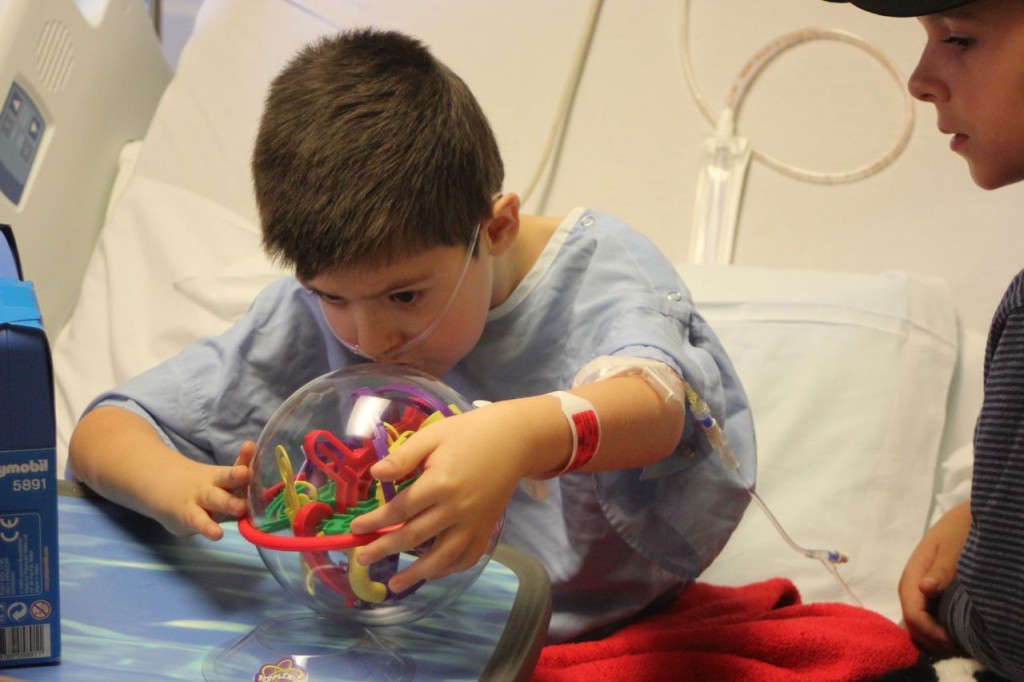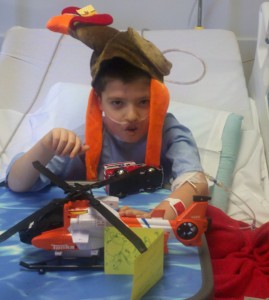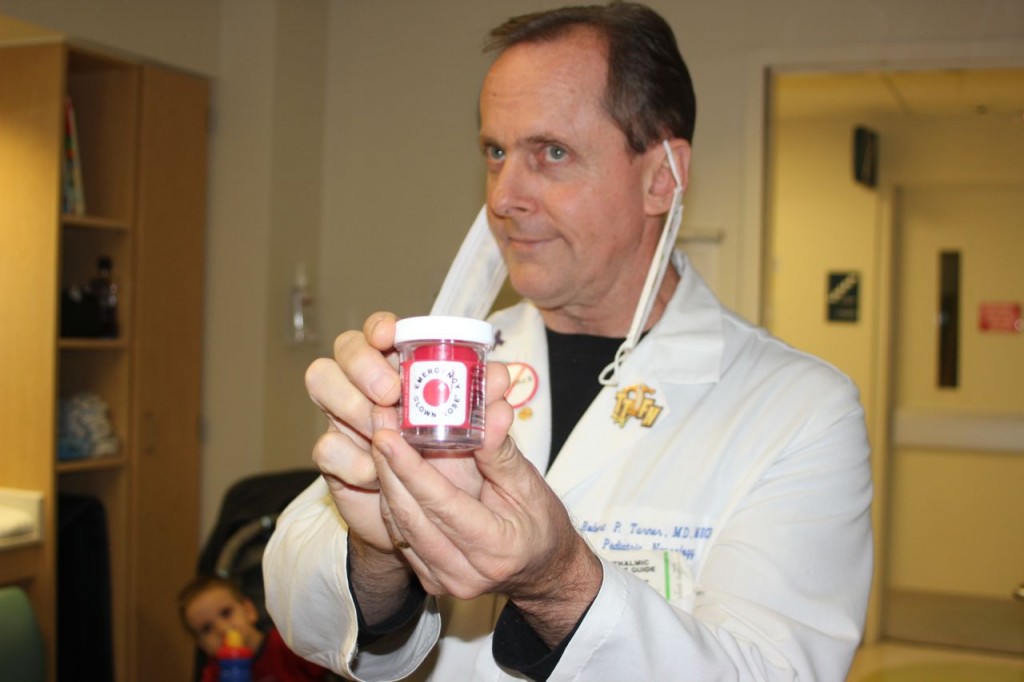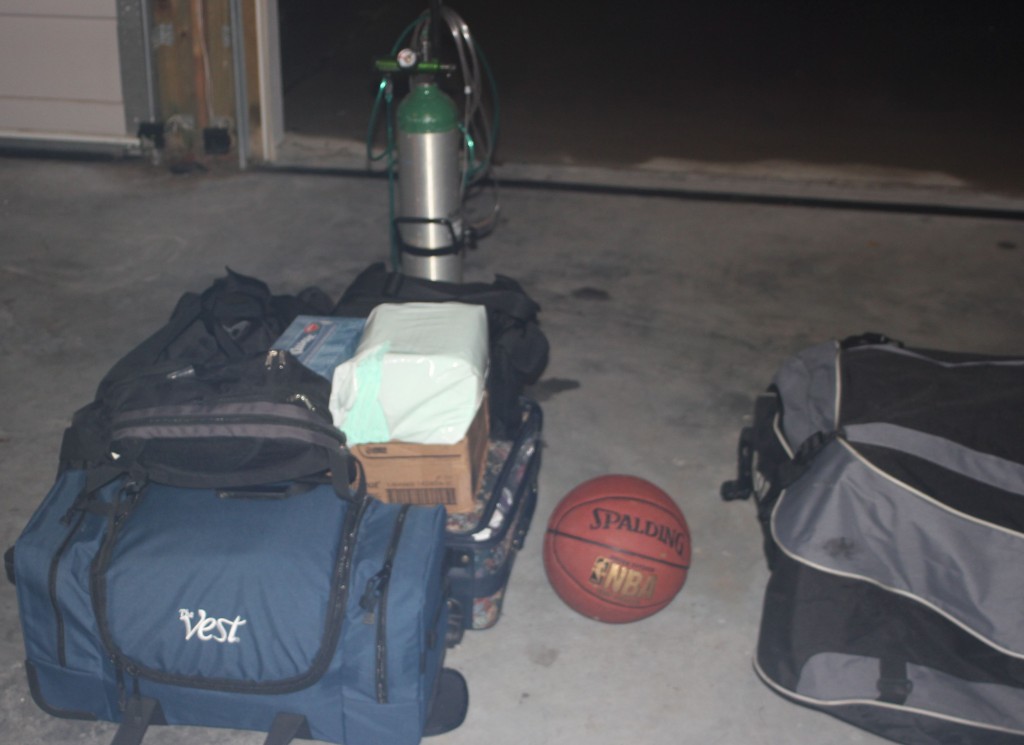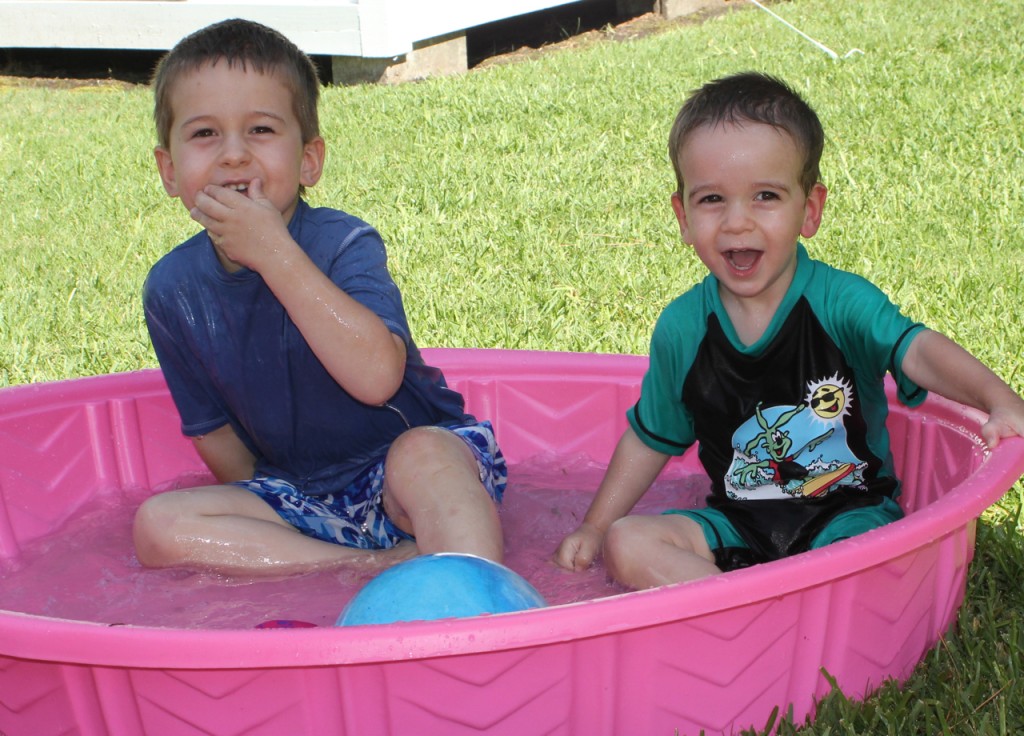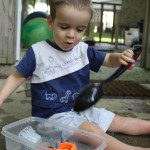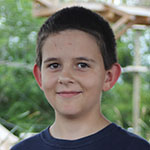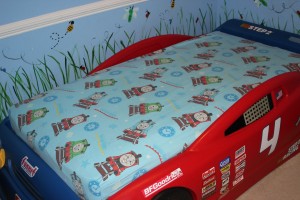 Bedwetting is a fairly common issue that many parents deal with at some point. Medical experts give assurances that this is nothing to be alarmed over. However, there are some logistics to deal with as a parent. You may have your child potty trained during the day, but they are not quite there at night and that can create messes. You have a few choices in terms of using night-time pull-ups or some kind of underwear cover. Many of these things are not 100% solutions. They may leak or you may simply choose to bite the bullet and move straight to cloth underwear at night without plastic pants. When/if you find yourself facing reoccurring bed wetting mess, the following will help you manage the clean-up process.
Bedwetting is a fairly common issue that many parents deal with at some point. Medical experts give assurances that this is nothing to be alarmed over. However, there are some logistics to deal with as a parent. You may have your child potty trained during the day, but they are not quite there at night and that can create messes. You have a few choices in terms of using night-time pull-ups or some kind of underwear cover. Many of these things are not 100% solutions. They may leak or you may simply choose to bite the bullet and move straight to cloth underwear at night without plastic pants. When/if you find yourself facing reoccurring bed wetting mess, the following will help you manage the clean-up process.
The picture above shows a bed made with an allergen cover on the mattress four fitted sheets, and some protective pads between each fitted sheet. The process is very simple. We learned this trick from many hospital stays with our son Caden. He is now eight years old (2013) and still has accidents. He has some pretty severe medical special needs that cause him to mess up sheets regularly. Even still, this trick is a perfect solution for average kids who simple have bed wetting accidents. Since we have made the bed with multiple layers we only need to strip off one sheet and the bed pads between the top sheet and the next layer. The pads that are still clean can be recycled for when you make the bed the next time. The soiled pads are simply tossed in the trash.
I call this short-sheeting a bed the long way. The hospitals actually use a short (partial) sheet under the child’s torso with a bed pad under the short sheet. The short sheet can also be used in a hospital setting to help turn/roll a patient with little assistance.
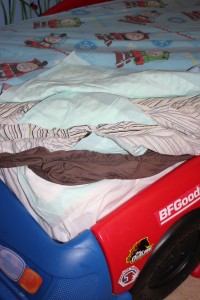 You will notice that we cover the entire bed. This is because our son gets up and often spreads the mess to the end of the bed as he is getting up to come tell us he has had an accident. The two pads near the end are not soiled as often, but they do protect the other layers of sheets, and the allergen cover protects the mattress from accidents. Click for a closer look. It is much easier in the middle of the night to simply strip off a layer and not have to worry about making a bed at 3:30 AM and then again at 5:45 AM. There have been nights that we have gone through three layers. And there are many nights when no layers are peeled off.
You will notice that we cover the entire bed. This is because our son gets up and often spreads the mess to the end of the bed as he is getting up to come tell us he has had an accident. The two pads near the end are not soiled as often, but they do protect the other layers of sheets, and the allergen cover protects the mattress from accidents. Click for a closer look. It is much easier in the middle of the night to simply strip off a layer and not have to worry about making a bed at 3:30 AM and then again at 5:45 AM. There have been nights that we have gone through three layers. And there are many nights when no layers are peeled off.
This last picture shows how many layers there are on this bed. You do have to stock up on some extra sheets and some bed pads, but that is a small price to pay in my opinion. You will notice that we use a solid color sheet on the bottom. That is our signal that we are on our last sheet and that there is nothing below it except for bed pads and an allergen cover. That means it is time to do laundry and remake the bed. The process of making the bed only takes a few minutes per layer.






